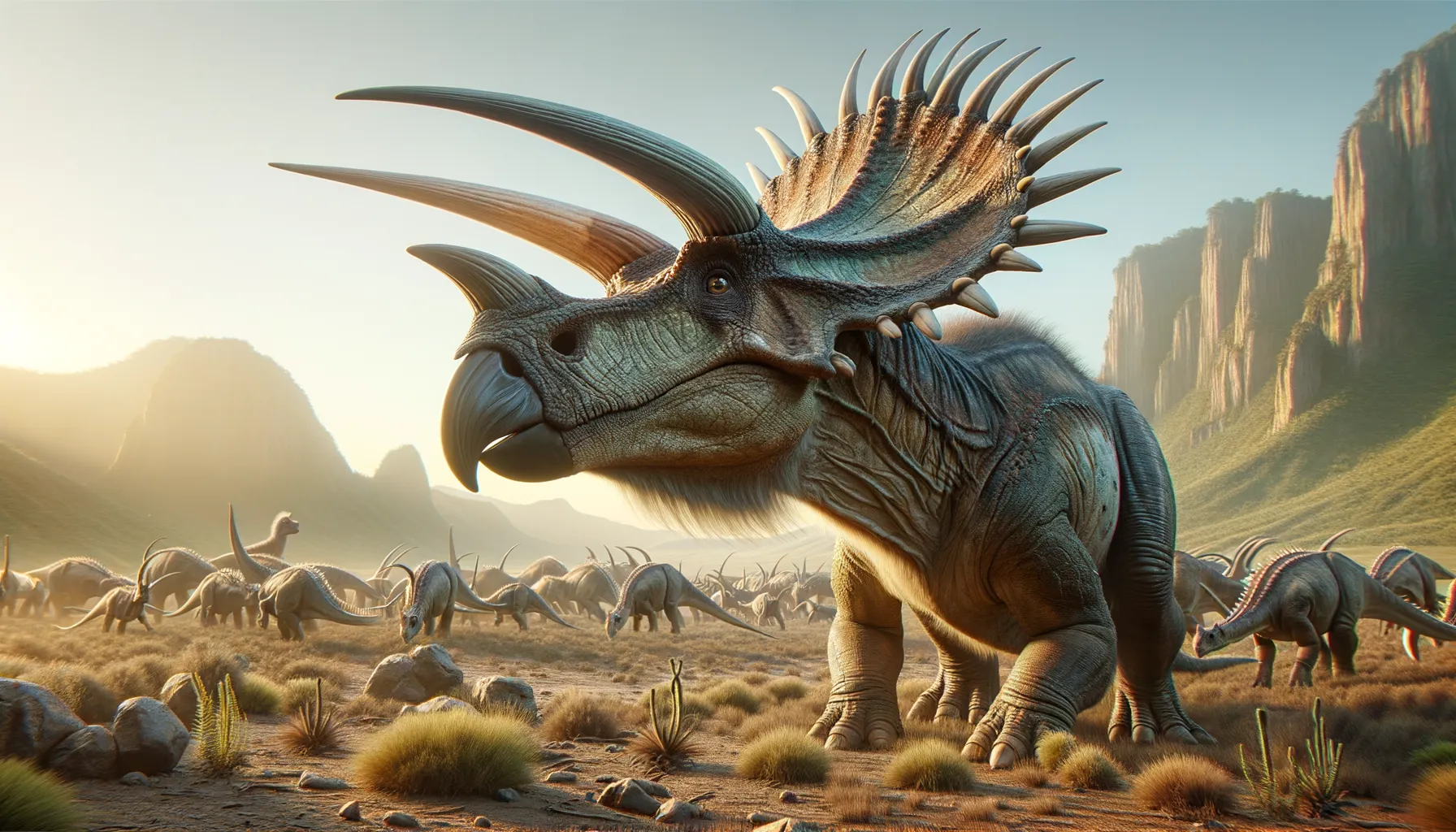
Avaceratops
Tiny titan with a frilly flair!
Period
Cretaceous
Length
Around 13 feet long.
Height
Roughly 3 feet at the hips.
Weight
About 1 to 2 tons.
Avaceratops was a small, horned dinosaur from the Late Cretaceous period, known for its frilled head and beak-like mouth. As a member of the ceratopsian family, it shared similarities with larger relatives like Triceratops, though it was much smaller in size. This dinosaur was a herbivore, meaning it primarily fed on plants, and likely lived in groups to protect against predators.
Diet
Avaceratops was a herbivore consuming a diet rich in plant material, including ferns and cycads. Its beak-like mouth was well-suited for cutting through tough vegetation.
Hunting
As a herbivore, Avaceratops did not hunt. Instead, it foraged for plant material, using its sharp beak to nip off leaves and stems.
Environmental challenges
Avaceratops lived during a time of fluctuating climates and shifting landscapes. It had to adapt to periods of drought and changes in plant availability. Predators posed a constant threat, requiring vigilance and group living as potential defense strategies.
Speed
Moderate; not among the fastest dinosaurs.
Lifespan
Approximately 10 to 20 years.
First discovery
Discovered in the late 1980s in Montana, USA.
Fun Facts
- Avaceratops was a small ceratopsian dinosaur that lived during the Late Cretaceous period.
- It was first discovered in Montana, USA, in 1981 by a team led by paleontologist Peter Dodson.
- Unlike the famous Triceratops, Avaceratops had a shorter frill and lacked large brow horns.
- Avaceratops is named after Ava Cole, the wife of the landowner where the fossil was found— 'Ava' plus 'ceratops,' which means 'horned face.'
- This dinosaur was a herbivore, feeding on plants with its sharp beak and shearing teeth.
- Avaceratops is thought to have been about 2 to 3 meters (6.5 to 10 feet) long, making it relatively small for a ceratopsian.
Growth and Development
Avaceratops likely grew steadily from birth to maturity, following a pattern similar to other ceratopsians. Juveniles may have relied on adults for protection. As they matured, they developed characteristic frills and horns, potentially used for defense or attracting mates.
Habitat
The environment of Avaceratops consisted of lush forested areas and open plains. These habitats provided ample plant life for foraging. Seasonal changes would have required migratory behavior to find food and water.
Interaction with other species
Avaceratops probably interacted with various other herbivorous dinosaurs, competing for food resources. It lived alongside predators such as theropods, necessitating a communal way of life for safety. Symbiotic relationships with smaller species could have occurred, aiding in plant growth and seed dispersal.
Natural lifespan
Avaceratops commonly lived for about 10 to 20 years in the wild.
Reproduction
Avaceratops likely reproduced by laying eggs in nests constructed on the ground. Parental care might have been similar to modern birds, with young staying in the nesting areas until they could fend for themselves.
Social behaviour
Avaceratops may have lived in herds for social interaction and protection from predators. Communication could have involved vocal sounds and visual displays using their frills and horns. Flow herd dynamics would have contributed to their survival in changing environments.
Fossil locations
Fossils of Avaceratops have been found primarily in Montana, USA. These discoveries have provided valuable insight into its structure and behavior. Paleontological evidence is focused in the northern parts of the Western Interior Seaway.
